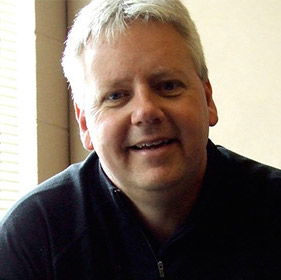Teaching for Transformation
A large percentage of our programming time in youth ministry is dedicated to teaching. From large group preaching to small group Bible studies, we want to see students learn. The problem is they are not learning. If our teaching was working, our students would not be leaving the church in college.
“If our teaching was working, our students wouldn’t be leaving the church in college.”
Our teaching should stir a desire in our students to live differently, to change. But, in reality, it’s producing apathy. So rather than focusing on funny stories, more dramatic illustrations, or fewer points, let’s concentrate on the way students transform. Let’s learn to teach for transformation.
1. Start Small—Build Relationships
Here’s the truth: the bigger the group, the less students learn. The one-size-fits-all teaching system is sending a message to students that says, “This is not for you specifically, so it’s okay to tune out.” Students are used to a world in which they get to enter into every discussion. But not in church. There, they just have to sit and listen.
Many of us serve in youth ministries built around large teaching times. We introduce a topic, then break into small groups so a facilitator can challenge students’ thinking on that topic. We have known for years that students learn best in small groups because the teacher can build a deeper relationship with the students. Students want to learn from people who care about them. We can learn facts and figures from people we don’t know, but for something deeper like faith, it needs to come from someone willing to build a relationship, to answer questions and converse.
2. Ask Second-level Questions
Leaders who teach for transformation must be intentional about how they approach a topic from Scripture. They know the verses and ask good questions, but it’s what they do with students’ answers that makes the difference.
When a student answers a question, they’re mainly concerned with giving the “right” answer. They aren’t concerned with how that answer applies to their lives; they just want to make sure they don’t look dumb. And this approach to questioning shouldn’t surprise us—it’s how they answer questions every day in school. But we are not schoolteachers, so we shouldn’t act like them.
Whether a student’s answer is wrong or right, we should immediately encourage the student with, “Good answer.” That doesn’t mean we shouldn’t correct misconceptions. But students have to feel comfortable taking risks, even if they aren’t 100-percent sure of the right answer.
Whatever their answer, immediately ask a follow-up question so the student can verbalize what their answer means. A few good follow-up questions are, “What does that mean to you?” “How does that look in your life?” and “How would you live that out?” These are what I like to call second-level questions. They are meant to help students internalize their answers. Without second-level questions, students will never get past the basic level of “correct or incorrect” to a deeper level of transformation. Do your adult volunteers ask second-level questions? Most just want to get through the material you give them, so they don’t know to ask these follow-ups.
3. Make Measurable Applications
Once the student has answered the second-level questions, it’s now time to help them make an application. This takes real bravery on the part of the teacher. Students don’t tend to voice applications just because we ask. Again, they are afraid of making a mistake or saying something stupid. We need to remind them that there are no wrong applications. But you can push students to dig deeper by asking them to include in their applications a “who,” “what,” “where,” and “when.” For example, the application “I want to love my younger brother more,” can be sharpened with a little refinement: “I will make a snack for my brother when he gets home after school at 3:30 on Wednesday.”
4. Hold Students Accountable
This more specific application becomes measurable—you can learn whether or not a student actually did it. And this is where accountability comes in. By taking the time to debrief students’ applications, you can see for yourself if your lesson made an impact. If the students followed through, you can move on. If they didn’t, find out why so you know where they need more training. That’s the only way you’ll see real transformation taking place.
Teaching for transformation requires hard work (maybe more work than the teacher or small group leader signed up for). Without relationship, intentionality, and bravery, it’ll never happen. But if we don’t do this kind of teaching, we will continue filling students’ heads with information that their hearts will soon forget.
To learn more about teaching for transformation, check out our Refuel Retreats, where you can receive individualized coaching with like-minded youth workers in a number of beautiful settings.
About the Author
Doug Franklin
Doug Franklin is the president of LeaderTreks, an innovative leadership development organization focusing on students and youth workers. Doug and his wife, Angie, live in West Chicago, Illinois. They don’t have any kids, but they have 2 dogs that think they are children. Diesel and Penelope are Weimaraners who never leave their side. Doug grew up in… Read More




